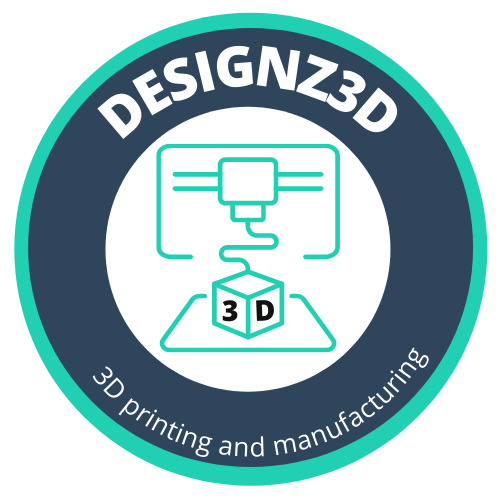The integration of 3D printing into education is rapidly gaining momentum, transforming traditional teaching methods and enhancing learning experiences. As educators seek innovative ways to engage students and enrich their curricula, 3D printing has emerged as a powerful tool with numerous benefits. Here are ten compelling reasons why educators are increasingly adopting 3D printing in their classrooms.
1. Enhancing Visual Learning
Concrete Visualization: 3D printing allows educators to bring abstract concepts to life. By creating physical models of complex structures, historical artifacts, or scientific phenomena, students can gain a deeper understanding through tangible, hands-on experiences.
Interactive Models: Students can interact with and explore 3D-printed models, making learning more engaging and dynamic. This interaction helps reinforce theoretical knowledge and supports various learning styles.
2. Fostering Creativity and Innovation
Encouraging Design Thinking: 3D printing promotes creativity by allowing students to design and create their own projects. This hands-on approach encourages design thinking, problem-solving, and innovation as students bring their ideas from concept to reality.
Customizable Projects: Students can customize their projects to reflect personal interests and ideas, fostering a sense of ownership and pride in their work. This customization can lead to more meaningful and impactful learning experiences.
3. Supporting STEM Education
Practical Application: 3D printing is a valuable tool for teaching STEM (Science, Technology, Engineering, and Mathematics) concepts. It provides practical applications for mathematical calculations, engineering principles, and scientific experiments, bridging the gap between theory and practice.
Real-World Skills: Working with 3D printing technology helps students develop skills that are highly relevant in the modern workforce, including technical skills, critical thinking, and problem-solving.
4. Enhancing Collaboration
Group Projects: 3D printing facilitates collaborative learning by allowing students to work together on group projects. Collaboration encourages teamwork, communication, and the sharing of ideas, leading to a richer learning experience.
Cross-Disciplinary Learning: Educators can integrate 3D printing across various subjects, promoting interdisciplinary learning. For example, students can create historical artifacts in a history class, design engineering models in a technology class, and explore biological structures in a science class.
5. Promoting Active Learning
Hands-On Experience: 3D printing provides students with hands-on learning opportunities that go beyond traditional textbook methods. Actively engaging in the creation process helps reinforce theoretical knowledge and fosters deeper understanding.
Experimentation and Iteration: Students can experiment with different designs and iterations, learning from trial and error. This iterative process helps develop problem-solving skills and encourages a growth mindset.
6. Personalizing Education
Custom Learning Aids: Educators can create personalized learning aids, such as customized models or visual aids tailored to individual students' needs. This personalization helps address diverse learning styles and abilities.
Adaptive Learning: 3D printing allows educators to adapt and modify resources to meet the specific needs of their students. This adaptability supports differentiated instruction and ensures that all students have access to relevant learning materials.
7. Facilitating Hands-On STEM Labs
Practical Experiments: 3D printing enables the creation of custom lab equipment and experimental tools, allowing for hands-on experimentation in STEM labs. Students can build and test their own prototypes, enhancing their understanding of scientific principles.
Cost-Effective Solutions: By printing lab equipment and components in-house, schools can reduce costs associated with purchasing commercial lab supplies. This cost-effectiveness makes hands-on STEM education more accessible.
8. Encouraging Critical Thinking
Design Challenges: 3D printing projects often involve design challenges that require critical thinking and problem-solving. Students must analyze problems, develop solutions, and evaluate their designs, fostering higher-order thinking skills.
Analytical Skills: Working with 3D models helps students develop analytical skills as they assess design feasibility, make modifications, and troubleshoot issues. These skills are valuable for both academic and real-world applications.
9. Bridging Digital and Physical Worlds
Integration of Digital and Physical: 3D printing bridges the gap between digital design and physical creation. Students learn to translate digital models into tangible objects, gaining experience in both digital and physical realms.
Understanding Technology: Exposure to 3D printing technology helps students understand the digital manufacturing process and its applications. This understanding is crucial for navigating the increasingly digital world.
10. Preparing Students for Future Careers
Industry-Relevant Skills: Knowledge of 3D printing technology is highly relevant to various careers in engineering, design, manufacturing, and technology. By learning about 3D printing, students acquire skills that are valuable in the job market.
Innovation and Entrepreneurship: Exposure to 3D printing can inspire students to explore entrepreneurial ventures or careers in innovative fields. The ability to create prototypes and develop new products can spark interest in entrepreneurship and innovation.
Conclusion
3D printing is revolutionizing education by enhancing visual learning, fostering creativity, supporting STEM education, and promoting active and personalized learning. As educators increasingly turn to this technology, they are providing students with valuable skills and experiences that will prepare them for future success. By integrating 3D printing into their teaching practices, educators are not only enriching their students' learning experiences but also shaping the innovators and problem-solvers of tomorrow.
Embrace the possibilities of 3D printing and explore how this transformative technology can enhance your educational practices and inspire your students.
